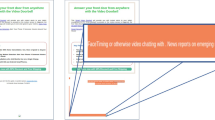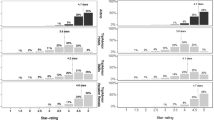Abstract
Deceptive opinions of online merchandises, also known as review spams, cause great loss for consumers, manufacturers and even business-to-customer platforms. However, due to the weak supervision problem, especially the lack of ground-truth labels, identifying these untruthful reviews is challenging. What’s even worse is that crowdsourcing workers out of manipulation campaigns always collaborate to distort an item’s reputation, rendering the product together with its brand difficult to be rehabilitated. State-of-the-art solutions on spammer group recognition highlight co-reviewing behaviours or sentiment similarity to cluster reviews, which can only yield loosely-coupled candidates of reviewer sets. In this paper, we highlight the commenting interaction between reviews and model it as a bipartite graph and discover a new low-budget spam, i.e., responsive spam. Furthermore, we recognize strong-correlated groups of spam through a propagation technique upon two widely adopted spam indicators, i.e., text duplication and posting burstiness. Comparative results show that our approach is effective and outperforms state-of-the-art solutions with great significance.









Similar content being viewed by others
References
Akoglu L (2013) Opinion Fraud Detection in Online Reviews by Network Effects. Proceedings of the Seventh International AAAI Conference on Weblogs and Social Media, 2013 of Conference
Allahbakhsh M, Ignjatovi A, Benatallah B, Beheshti S-M-R, Bertino E, Foo N (2013) Collusion detection in online rating systems. Proceedings of the APWeb
Asghar MZ, Ullah A, Ahmad S, Khan A (2020) Opinion spam detection framework using hybrid classification scheme. Soft Comput 24(5):3475–3498
Bhuvaneshwari P, Rao AN, Robinson YH (2021) Spam review detection using self attention based CNN and bi-directional LSTM. Multimed Tools Appl 80(12):18107–18124
Chakrabarti D, Papadimitriou S, Modha D, Faloutsos C (2004) Fully Automatic Cross-Associations. KDD-2004 - Proceedings of the Tenth ACM SIGKDD International Conference on Knowledge Discovery and Data Mining.
Choo E, Yu T, Chi M (2015) Detecting opinion spammer groups through community discovery and sentiment analysis. Data Appl Sec Priv Xxix 9149:170–187
Choo E, Yu T, Chi M (2015) Detecting Opinion Spammer Groups Through Community Discovery and Sentiment Analysis. Proceedings of the 29th IFIP Annual Conference on Data and Applications Security and Privacy (DBSEC) of Conference.
Dewang RK, Singh AK (2018) State-of-art approaches for review spammer detection: a survey. J Intell Inf Syst 50(2):231–264
Do QNT (2016) A network-based approach to detect spammer groups. Proceedings of the 2016 of Conference
Do QNT (2017) A Fuzzy Approach to Detect Spammer Groups. Proceedings of the 2017 IEEE International Conference on Fuzzy Systems (FUZZ-IEEE) of Conference.
Fahfouh A, Riffi J, Adnane Mahraz M, Yahyaouy A, Tairi H (2020) PV-DAE: A hybrid model for deceptive opinion spam based on neural network architectures. Expert Syst Appl 157:113517
Gao Y, Gong M, Xie Y, Qin AK (2021) An attention-based unsupervised adversarial model for movie review spam detection. IEEE Transac Multimed 23:784–796
Jindal N, Liu B (2007) Analyzing and Detecting Review Spam. Proceedings of the Seventh IEEE International Conference on Data Mining (ICDM 2007), Omaha, NE, USA, IEEE, 547-552
Jiwei Li CC, Sujian L (2013) Topicspam: a topic-model based approach for spam detection. Proceedings of the the 51st Annual Meeting of the Association for Computational Linguistics (ACL 2013), 2013, Sofia, Bulgaria, 217–221.
Junting Ye LA (2015) Discovering Opinion Spammer Groups by Network Footprints. Proceedings of the 15 PKDD, 2015 of Conference
Lee KD, Han K, MyaengS-H (2016) Capturing word choice patterns with LDA for fake review detection in sentiment analysis. Proceedings of the the 6th International Conference on Web Intelligence, Mining and Semantics (WIMS 2016), 2016 of conference, Nimes, France, 1–7
Li J (2020) Code: Detecting gouped spam reviews based on officially nominated topics. Github.
Li Q, Wu Q, Zhu C, Zhang J, Zhao W (2019) Unsupervised User Behavior Representation for Fraud Review Detection with Cold-Start Problem. Proceedings of the Pacific-Asia Conference on Knowledge Discovery and Data Mining, 2019 of Conference, Cham, Springer, 222–236
Li J, Wang X, Yang L, Zhang P, Yang D (2020) Identifying ground truth in opinion spam: an empirical survey based on review psychology. Appl Intell 50(11):3554–3569
Li J, Zhang P, Yang L (2021) An unsupervised approach to detect review spam using duplicates of images, videos and Chinese texts. Comput Speech Lang 68:101186
Li J, Lv P, Xiao W, Yang L, Zhang P (2021) Exploring groups of opinion spam using sentiment analysis guided by nominated topics. Expert Syst Appl 171:114585
Liu Y, Pang B (2018) A unified framework for detecting author spamicity by modeling review deviation. Expert Syst Appl 112:148–155
Mo D (2020) China Online Retail Market Data Monitoring Report, 100EC.
Mukherjee A, Liu B, Wang J, Glance N, Jindal N (2011) Detecting Group Review Spam. Proceedings of the Proceedings of the 20th international conference companion on World Wide Web (WWW 2011), 2011 of Conference, 93–94.
Mukherjee A, Liu B, Glance N (2012) Spotting Fake Reviewer Groups in Consumer Reviews. Proceedings of the WWW 2012: the 21st international conference on World Wide Web, 2012 of Conference, ACM, 191–200.
Neisari A, Rueda L, Saad S (2021) Spam review detection using self-organizing maps and convolutional neural networks. Comput Sec 106:102274
Noekhah S, Binti Salim N, Zakaria NH (2020) Opinion spam detection: Using multi-iterative graph-based model. Inf Process Manag 57(1):102140
Oh YW, Park CH (2021) Machine cleaning of online opinion spam: developing a machine-learning algorithm for detecting deceptive comments. Am Behav Sci 65(2):389–403
Rayana S, Akoglu L (2015) Collective Opinion Spam Detection. Proceedings of the Proceedings of the 21th ACM SIGKDD International Conference on Knowledge Discovery and Data Mining - KDD '15, 2015 of Conference, 985–994.
Vidanagama DU, Silva TP, Karunananda AS (2019) Deceptive consumer review detection: a survey. Artif Intell Rev:1–30
Vlad Sandulescu ME (2015) Detecting singleton review spammers using semantic similarity. Proceedings of the the 24th International Conference onWorld WideWeb Companion (WWW 2015), 2015 of conference, Florence, Italy, 971–976
Wang Z, Hou T, Song D, Li Z, Kong T (2017) Detecting review spammer groups via bipartite graph projection. Comput J 59(6):861–874
Wang Z, Gu S, Xu X (2018) GSLDA: LDA-based group spamming detection in product reviews. Appl Intell 48(9):3094–3107
Wang Z, Gu S, Zhao X, Xu X (2018) Graph-based review spammer group detection. Knowl Inf Syst 55(3):571–597
Xu C, Zhang J (2015) Towards collusive fraud detection in online reviews. IEEE Int Conf Data Mining (Icdm) 2015:1051–1056
Xu C, Zhang J, Chang K, Long C (2013) Uncovering collusive spammers in Chinese review websites. Proceedings of the Proceedings of the 22nd ACM international conference on Information & Knowledge Management, 2013 of Conference, San Francisco, California, USA, Association for Computing Machinery, 979–988
You L, Peng Q, Xiong Z, He D, Qiu M, Zhang X (2020) Integrating aspect analysis and local outlier factor for intelligent review spam detection. Futur Gener Comput Syst 102:163–172
Zhang L, Wu Z, Cao J (2018) Detecting spammer groups from product reviews: a partially supervised learning model. IEEE Access 6:2559–2568
Zhang F, Hao X, Chao J, Yuan S (2020) Label propagation-based approach for detecting review spammer groups on e-commerce websites. Knowl-Based Syst 193:105520
Acknowledgements
This work was supported in part by the National Nature Science Foundation of China, under grant 61801285 and 61802247.
Author information
Authors and Affiliations
Corresponding author
Ethics declarations
Conflict of interest
The authors declare that they have no conflict of interest.
Additional information
Publisher’s note
Springer Nature remains neutral with regard to jurisdictional claims in published maps and institutional affiliations.
Rights and permissions
Springer Nature or its licensor (e.g. a society or other partner) holds exclusive rights to this article under a publishing agreement with the author(s) or other rightsholder(s); author self-archiving of the accepted manuscript version of this article is solely governed by the terms of such publishing agreement and applicable law.
About this article
Cite this article
Li, J., Hu, J., Zhang, P. et al. Exposing collaborative spammer groups through the review-response graph. Multimed Tools Appl 82, 21687–21700 (2023). https://doi.org/10.1007/s11042-023-14650-4
Received:
Revised:
Accepted:
Published:
Issue Date:
DOI: https://doi.org/10.1007/s11042-023-14650-4




